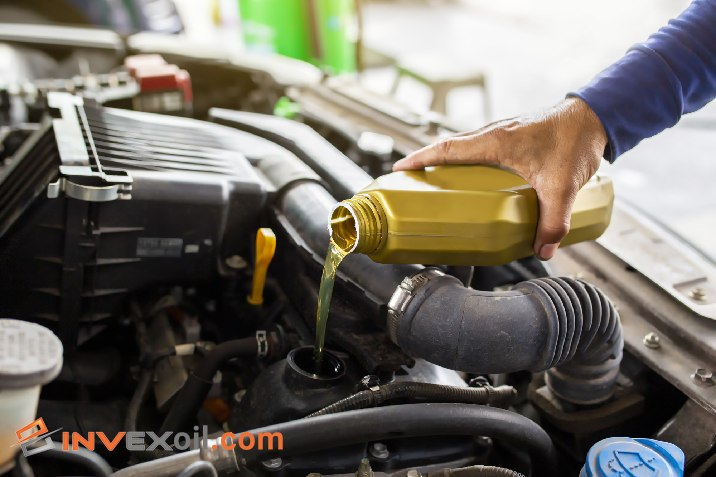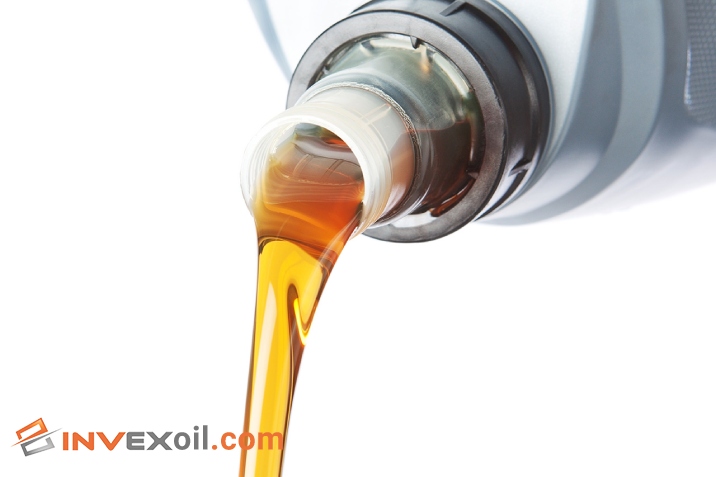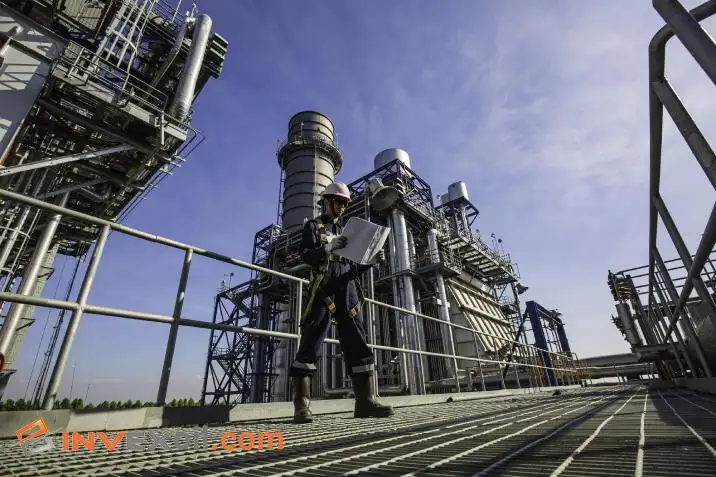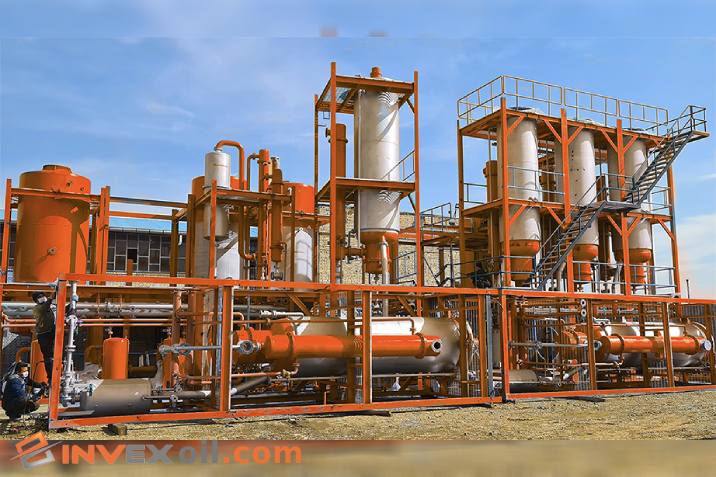The refining of used engine oil is an important process that can provide numerous benefits, including reducing waste, conserving energy, and promoting sustainability. As the demand for lubricants continues to grow, so does the need for effective and efficient methods of used oil re-refining. In this comprehensive introduction to the topic, we will explore the properties and characteristics of used engine oil, the various technologies used for refining, the benefits of the process, the challenges associated with it, and the future outlook for this important industry.
Table of Contents
Properties and Characteristics of Used Engine Oil
Used engine oil is a complex mixture of hydrocarbons, additives, and contaminants that pose a significant environmental hazard if not disposed of properly. Therefore, engine oil refinery plants are used to recover engine oil valuable components and reduce the environmental impact of improper disposal.
Chemical composition of used engine oil
The chemical composition of used engine oil varies depending on the type of engine and the lubricant used. It typically consists of 75-85% hydrocarbons, 5-10% additives, and 5-20% contaminants. Hydrocarbons are the main component and can be further classified as paraffins, olefins, and aromatics. Additives are used to enhance the performance and longevity of the lubricant, while contaminants are introduced during the engine operation.
Contaminants in used engine oil
The contaminants in used engine oil include metals, such as lead, copper, and zinc, which are released from engine components during the operation. Other contaminants include fuel, dirt, water, and combustion by-products, such as soot and carbon.
Physical properties of used engine oil
The physical properties of used engine oil include viscosity, flash point, pour point, and acidity. Viscosity is a measure of the oil’s resistance to flow, while flash point and pour point are the temperatures at which the oil will ignite and solidify, respectively. Acidity is a measure of the oil’s ability to corrode engine components. There are two tables to help you understand this part of used oil refining.
Chemical composition of used engine oil
| Component | Percentage |
| Hydrocarbons | 75-85% |
| Additives | 5-10% |
| Contaminants | 5-20% |
Contaminants in used engine oil
| Contaminant | Source |
| Metals (lead, copper, zinc) | Engine components |
| Fuel | Incomplete combustion |
| Dirt | Engine wear |
| Water | Engine condensation |
| Soot and carbon | Combustion by-products |
Refining of Used Engine Oil Technologies
There are several technologies available for refining used engine oil. These technologies are designed to remove contaminants and recover valuable components from the used oil, making them suitable for reuse.
Distillation
Distillation is a thermal separation process that separates the components of used engine oil based on their boiling points. The process involves heating the used oil to vaporize the components, which are then condensed and collected based on their boiling points.
Hydrotreating
Hydrotreating is a refining process that involves the addition of hydrogen to the used oil under high pressure and temperature. The process removes sulfur, nitrogen, and other contaminants from the used oil, making it suitable for reuse.
Solvent Extraction
Solvent extraction is a process that involves the use of solvents to dissolve and remove contaminants from the used oil. The process is effective for removing heavy metals and other impurities from the used oil.
Comparison of used engine oil refining technologies
Each of the refining technologies has its advantages and disadvantages. Distillation is a cost-effective process that requires less energy and equipment, but it is less effective at removing contaminants. Hydrotreating is a more effective process for removing contaminants but requires more energy and equipment. Solvent extraction is effective for removing heavy metals but can be expensive.
Comparison of refining technologies
| Refining Technology | Advantages | Disadvantages |
| Distillation | Cost-effective, requires less energy and equipment | Less effective at removing contaminants |
| Hydrotreating | More effective at removing contaminants | Requires more energy and equipment |
| Solvent Extraction | Effective for removing heavy metals | Can be expensive |
Benefits of Refining Used Engine Oil
Refining used engine oil has several benefits, including environmental, economic, and energy conservation. Additionally, the quality of refined used oil is comparable to virgin oil, making it a viable alternative to virgin oil.
Environmental Benefits
That’s helping to reduce the amount of waste oil that is generated, preventing the contamination of soil and water resources. It also helps to reduce greenhouse gas emissions, as the energy required to produce virgin oil is avoided.
Economic Benefits
Refining used engine oil is a cost-effective way to produce lubricants and other products. The process of refining used oil is less expensive than producing virgin oil, making it a viable option for lubricant manufacturers.
Energy Conservation Benefits
That requires less energy than producing virgin oil, reducing the overall energy consumption in the lubricant production process. Additionally, the energy required to transport used oil to a recycling facility is less than the energy required to transport virgin oil from its source.
Comparison with Virgin Oil
Refined used engine oil has similar properties and characteristics to virgin oil, making it a viable alternative. The production of refined used oil also has a lower environmental impact than producing virgin oil.
Refining Process of Used Engine Oil
The refining of used engine oil involves a series of processes that remove contaminants and impurities, leaving behind a usable product. The three main refining technologies used are distillation, hydrotreating, and solvent extraction.
Distillation
The distillation process involves heating the used oil to high temperatures, causing it to vaporize. The vapor is then condensed, and the resulting liquid is collected. This process removes heavy contaminants such as metals and asphaltic materials, leaving behind a cleaner oil product.
Hydrotreating
The hydrotreating process involves the use of hydrogen gas and a catalyst to remove sulfur, nitrogen, and other contaminants from the used oil. The process takes place at high temperatures and pressures, resulting in a cleaner, high-quality oil product.
Solvent Extraction
The solvent extraction process involves the use of solvents to dissolve contaminants and impurities in the used oil. The resulting solution is then separated, and the solvent is evaporated, leaving behind a cleaner oil product.
Comparison of Refining Technologies
| Refining Technology | Process | Advantages | Disadvantages |
| Distillation | Heating used oil to vaporize and collect the liquid | Cost-effective, remove heavy contaminants | Limited removal of light contaminants |
| Hydrotreating | Use of hydrogen gas and catalyst at high temperatures and pressures | Removes sulfur, nitrogen, and other contaminants | Expensive, requires large amounts of hydrogen |
| Solvent Extraction | Use of solvents to dissolve impurities | Effective in removing light contaminants | Requires a large amount of solvent, expensive |
Challenges in Refining Used Engine Oil
The refining of used engine oil is not without its challenges. These include issues related to the quality of the used oil, the costs associated with the refining process, regulatory challenges, and technical difficulties.
Quality of used engine oil
Used engine oil can vary greatly in quality, with contaminants ranging from heavy metals to water and dirt. This can make it difficult to refine the oil to a usable state, as different contaminants require different refining techniques.
Costs of refining
The refining process can be costly, requiring specialized equipment and skilled technicians. The costs of refining used engine oil can be higher than producing new oil, making it difficult for some companies to justify the expense.
Regulatory challenges
There are regulatory challenges associated with refining used engine oil, including regulations related to the handling and disposal of hazardous waste products. These regulations can vary by region, making it difficult for companies to navigate the legal landscape.
Technical challenges
The technical challenges associated with refining used engine oil include issues related to the equipment used, the quality of the oil, and the specific refining process chosen. Technical difficulties can result in lower-quality products or higher costs.
Future of Refining Used Engine Oil
The future of refining used engine oil is promising with advancements in technology and an increasing focus on sustainability driving growth in the industry. Technological advancements are making the refining process more efficient and cost-effective, while the market potential for sustainable lubricants is on the rise.
Environmental policies and regulations are also playing a role, as governments around the world implement stricter regulations on waste and emissions. As companies seek to reduce their environmental impact and comply with these regulations, the demand for refined used engine oil is likely to continue to grow.
Conclusion
refining used engine oil is an essential process that can provide numerous benefits for both the environment and the economy. The properties and characteristics of used engine oil, as well as the challenges associated with refining it, highlight the importance of utilizing effective and efficient refining technologies.
With advancements in technology, market potential, and environmental policies and regulations, the future of refining used engine oil is promising. By reducing waste, conserving energy, and promoting sustainability, refining used engine oil is a crucial aspect of a more environmentally responsible and economically viable future.
FAQ
What is the purpose of refining used engine oil?
The purpose of refining used engine oil is to remove impurities and contaminants, making it suitable for reuse and minimizing environmental impact.
How does the process of refining used engine oil work?
The process of refining used engine oil typically involves steps like pretreatment, distillation, solvent extraction, and finishing treatment to separate impurities and obtain purified oil.
What are the benefits of refining used engine oil?
Refining used engine oil offers several benefits, including reducing waste, preserving natural resources, minimizing pollution, and providing a cost-effective source of recycled oil for various applications.







In Onliner.co, Our team with 12 professional members in each of content creation, on-page, off-page, and technical domain has always been able to achieve customer satisfaction with 12 years of experience in SEO. In the content creation sector, our expert writers are up to date and experienced to provide a high quality and unique contents.